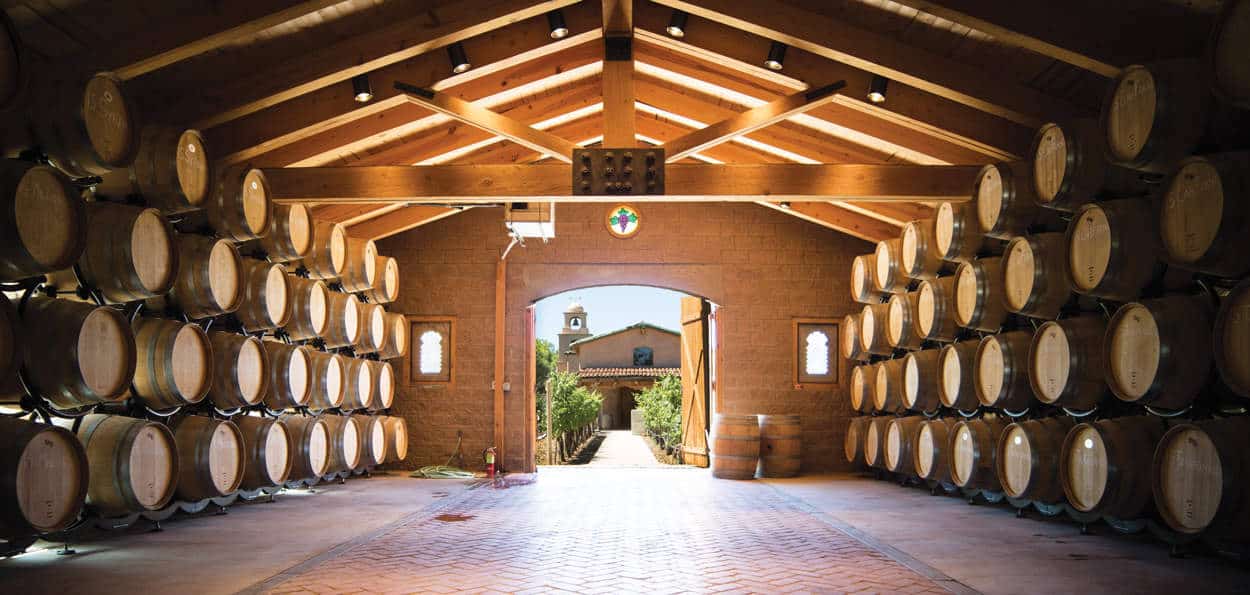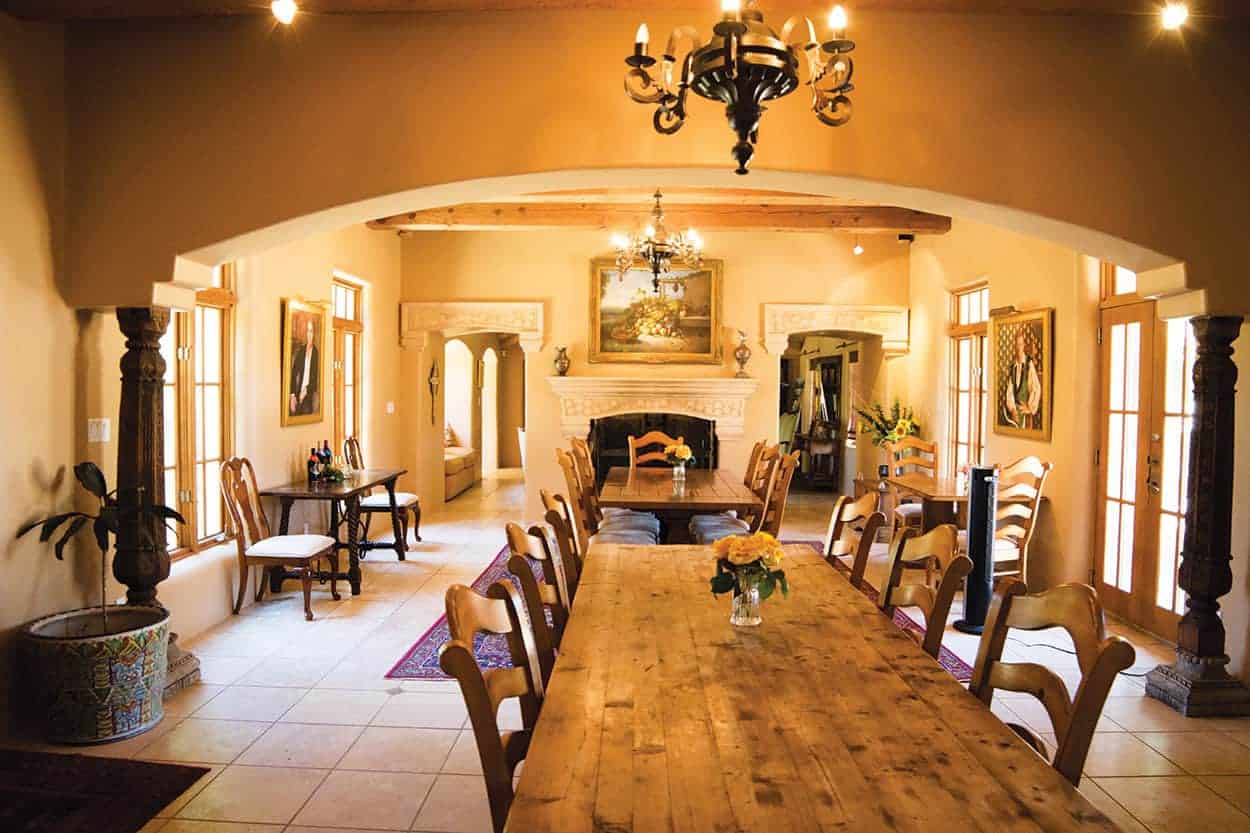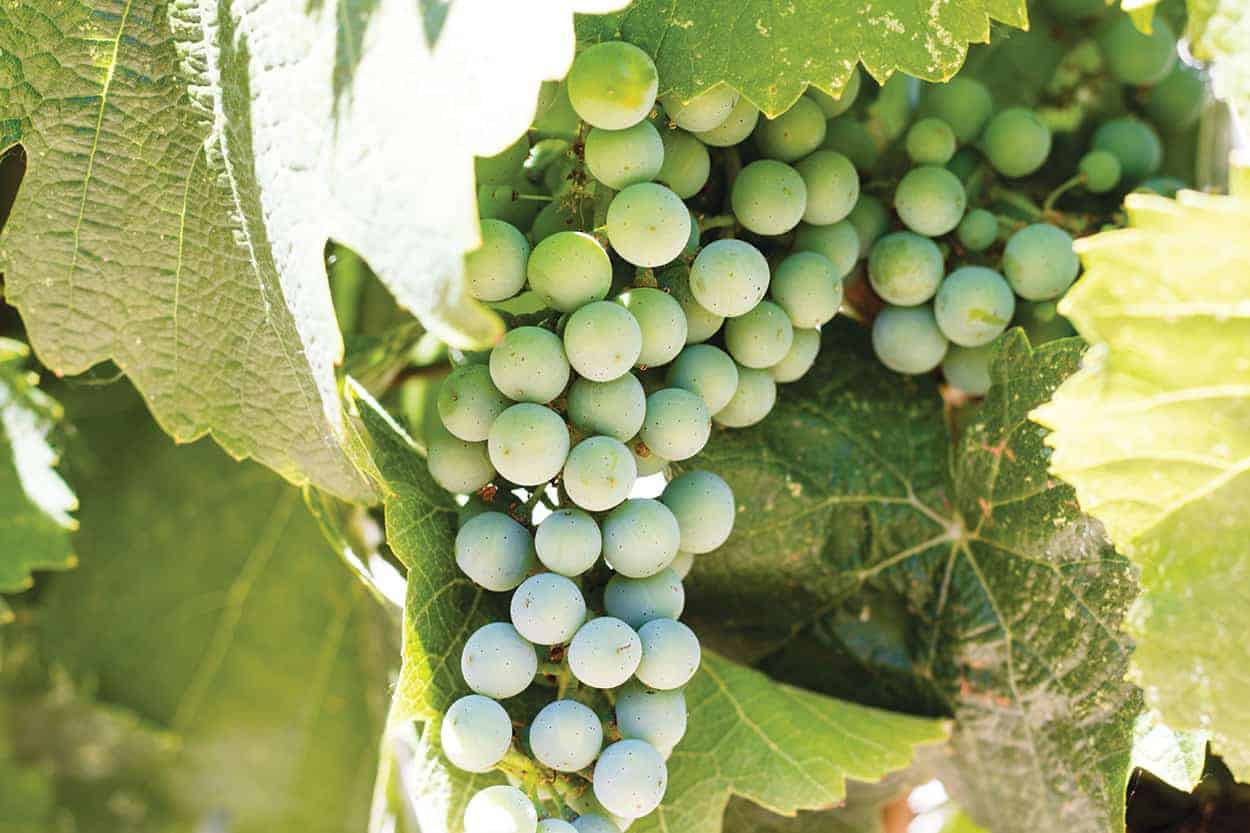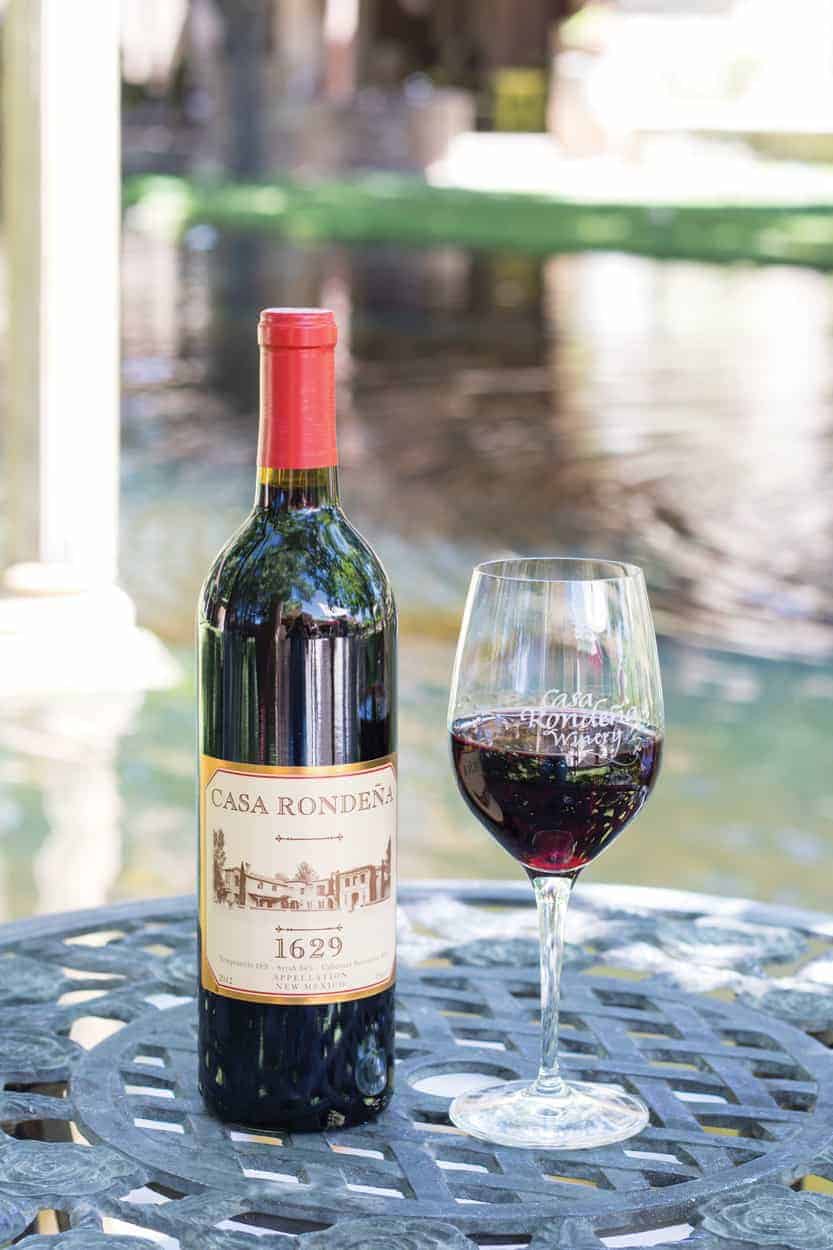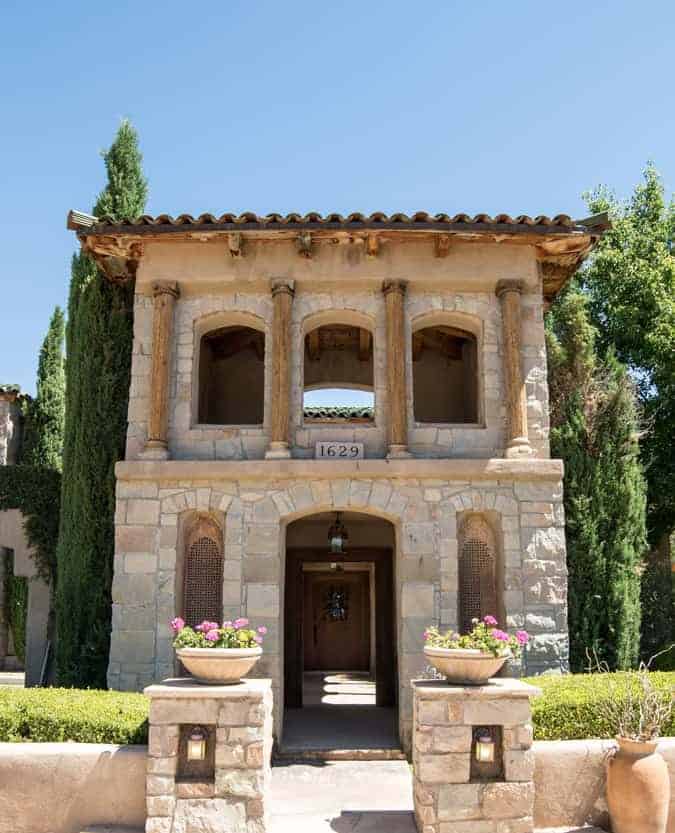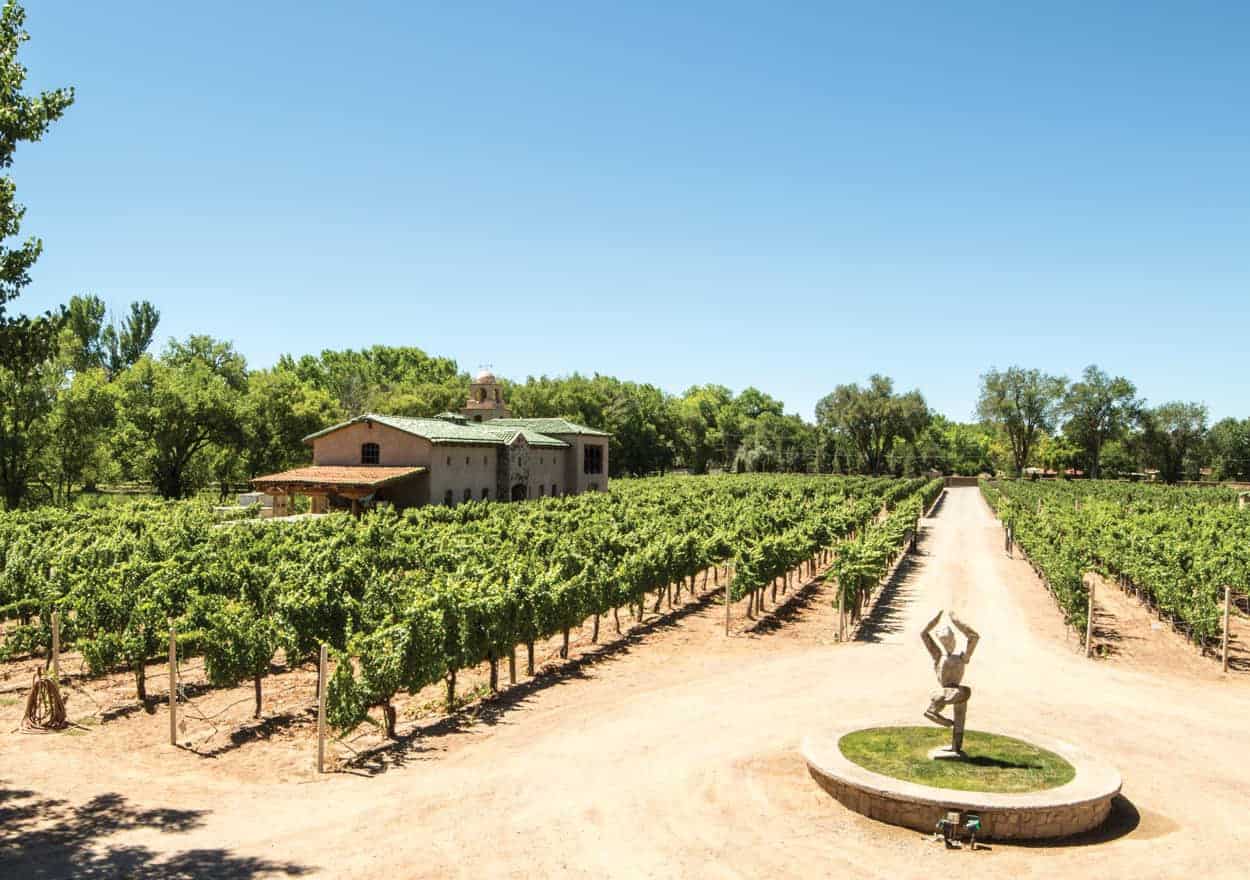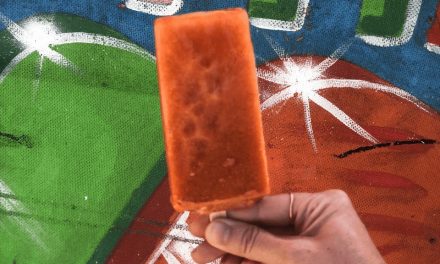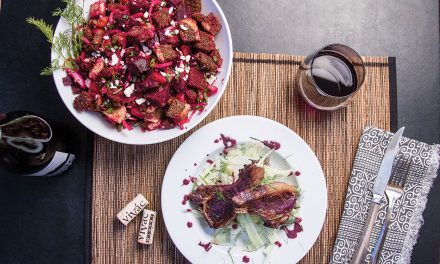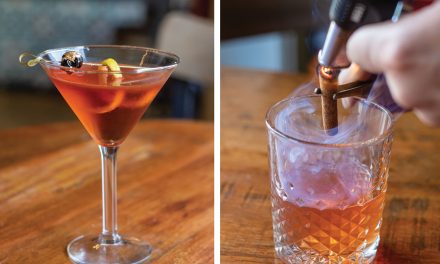Top: In the cool, dark barrel room, Casa Rondeña wines rest quietly in French and Hungarian barrels for years before being bottled. Bottom left: Dining room where members of the exclusive 1629 Club enjoy old world ambience. Bottom right: Riesling grapes in midsummer, destined for Casa Rondeña Serenade.
By Cameron Weber · Photos by Stephanie Cameron
We often hear that New Mexico has a longer history of wine grapes than any other state. The first grapevines planted in what is now New Mexico were ordered by two monks in defiance of a 1595 Spanish law that attempted to prevent competition with the farmers of Andalusia, who stood to profit enormously from the expanding Spanish Empire. Sacramental wine was essential to the exportation of Catholicism. Before the rebellious monks began making their own, wine arrived only every third year from Spain, delivered by oxcart, in heavy jugs laced with a green glaze that released lead into the sherry-like wine. They planted the first Mission grapes in 1629 at Senecú, a Piro Native American pueblo south of Socorro. Vines of this variety can still be found growing wild and tended today.
I asked John Calvin, winemaker at Casa Rondeña in Albuquerque, how this history has influenced the growing wine industry in New Mexico. “If we didn’t have that history in New Mexico, then most of us who started making wine more recently wouldn’t have had the gumption, or the courage, to try because the climate is just so difficult.” As a young man, Calvin left Albuquerque for rural Spain, curious about how two cultures that share so much early history compare. In Andalusia, he witnessed the surviving influences of Old Spain—an intersection of Sunni Islam, the Romani, and local Catholic cults. He returned a devotee of flamenco, became an architect, and began carving out a distinct position in the wine world.
While he accepts that his approach at Casa Rondeña derives more from Old World winemaking techniques than from American ones, Calvin emphasizes that attempting to imitate any other success is futile. “Young people now are so much more discriminating. That means we need to distinguish our wines as representative of what is possible in New Mexico.” I ask how he achieves that kind of distinction, and his answer is simple: “Our blends.”
Blending is the art of balancing multiple varietals (single grape varieties) into a superior wine. From an agricultural view, New Mexico’s climatic extremes are violent. The annual temperature variations that grapevines experience here are greater than any other wine-growing region in the world. It would be a rare event for a single varietal to produce perfectly from year to year. A skilled winemaker can assuage the disappointment of a challenging year for the Syrah harvest by adding it to the Cabernet Sauvignon. Blending wine requires not only a talent; it also demands a willingness to make unalterable changes. Calvin presents this as the best method for originality among New Mexico winemakers. “If you want your wines to transcend generations, then you need to make something that’s your own.”
Flamenco is by definition improvisation. In adobe architecture, the same building is never made twice, even if laid down by the same hands. Calvin chooses to emphasize New Mexico’s unpredictability by creating an annual version of his best-selling wine, the 1629, a blend of Tempranillo, Syrah, and Cabernet Sauvignon, named for the year that Vitis vinifera arrived to this land. The spirit of this wine captures our constant reinvention of what we already know intimately, but must again explore.
733 Chavez NW, Los Ranchos de Albuquerque
505-344-5911, www.casarondena.com
Top, left to right: 1629 is Casa Rondeña’s flagship wine, a proprietary blend; six-hundred-year-old architectural pieces from around the world are part of the charm of Casa Rondeña; a beautiful pond weaves through the grounds at the winery. Bottom left: 1629 club entrance. Middle right: A whimsical sculpture of a dancer greets guests entering the property through the well-tended vineyard. Bottom right: Fermentation facility reflects the interior of the winemaking at Casa Rondeña.
Edible celebrates New Mexico's food culture, season by season. We believe that knowing where our food comes from is a powerful thing. With our high-quality, aesthetically pleasing and informative publication, we inspire readers to support and celebrate the growers, producers, chefs, beverage and food artisans, and other food professionals in our community.


